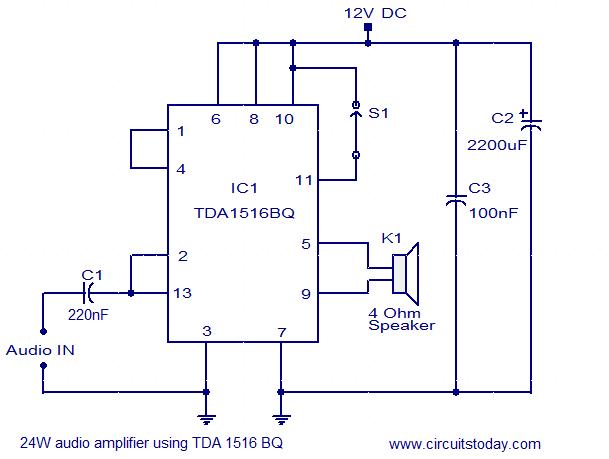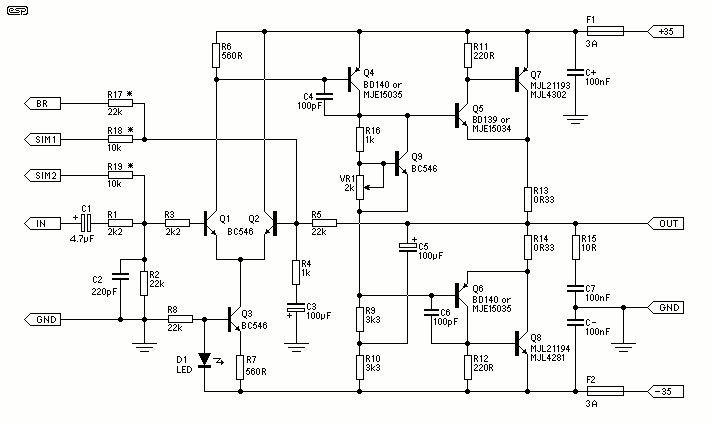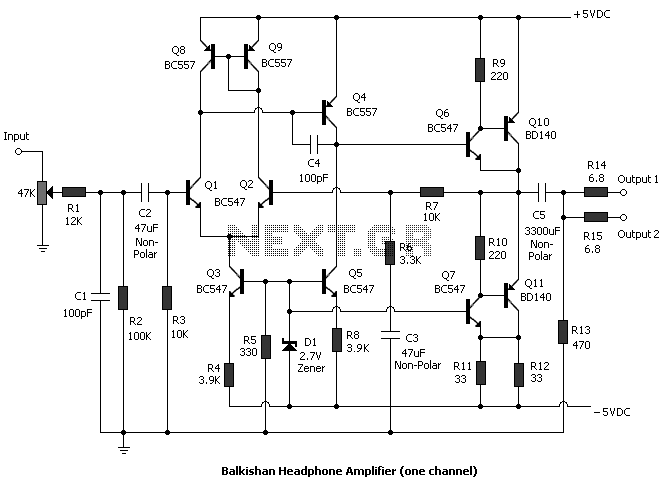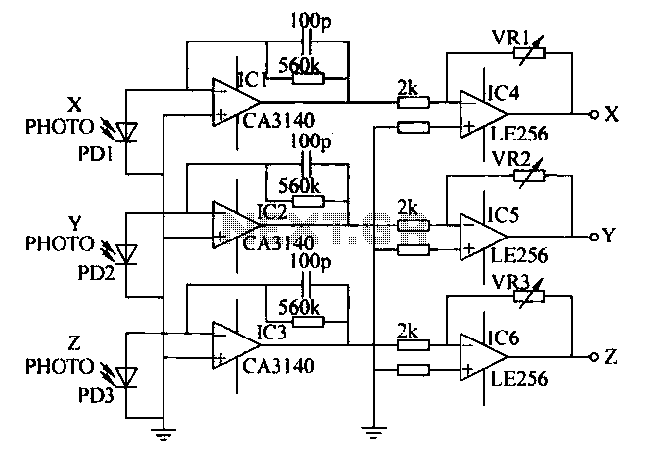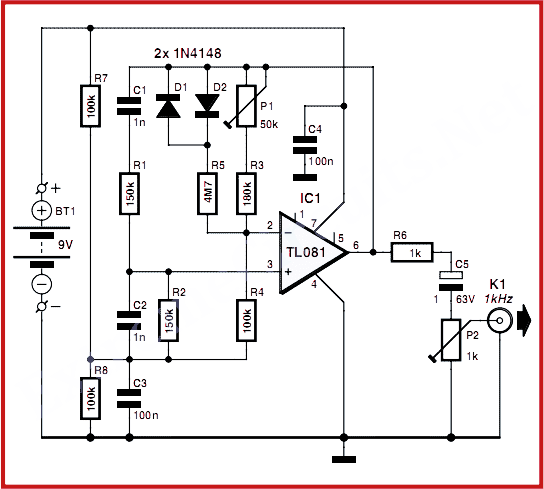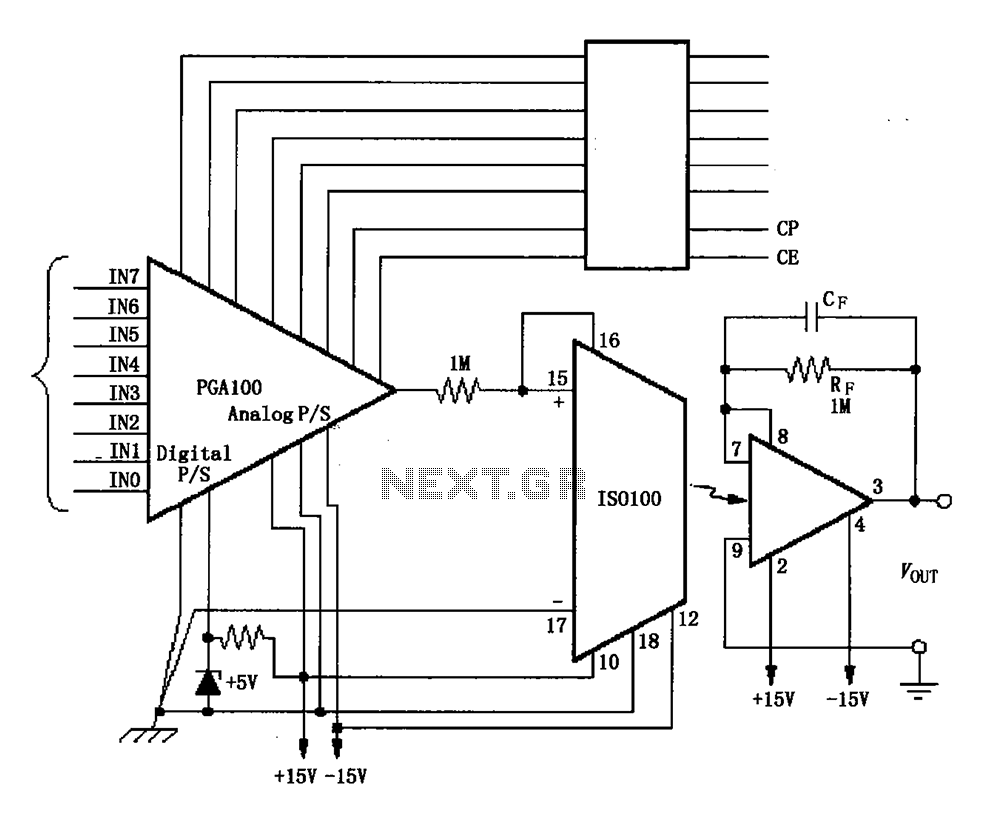
TDA1554 / 22W Stereo Amplifier
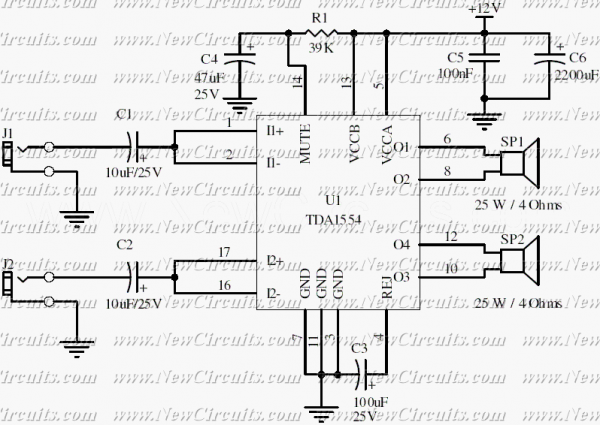
Very simple and useful circuit for amplify the stereo signals. The circuit dissipates roughly 28 watts of heat, so a good heatsink is necessary. The chip should run cool enough to touch with the proper heatsink installed. The circuit operates at 12 Volts at about 5 Amps at full volume. Lower volumes use less current, and therefore produce less heat. R1 is also a 5% resistor.
The described circuit is a basic audio amplifier designed to boost stereo signals effectively. It operates on a 12V power supply and draws approximately 5 Amps at maximum output, indicating it is capable of delivering substantial power to drive speakers. The circuit's design ensures that it can manage the heat generated during operation, with a thermal dissipation of around 28 watts. This necessitates the incorporation of an adequate heatsink to maintain optimal operating temperatures, preventing thermal overload and potential damage to the amplifier chip.
The amplifier circuit likely utilizes a common operational amplifier (op-amp) or a dedicated audio amplifier IC, which is configured to enhance the audio signal's amplitude. The mention of a 5% resistor indicates that R1, which may be a feedback or gain-setting resistor, plays a critical role in defining the circuit's gain characteristics. The choice of a 5% tolerance resistor suggests a balance between cost and performance, suitable for audio applications where precision is important but not critical.
At lower volume levels, the circuit's current draw decreases, resulting in reduced heat generation. This characteristic is advantageous for maintaining efficiency and extending the lifespan of the components. The design should also incorporate bypass capacitors to filter out noise and ensure a clean audio signal, as well as decoupling capacitors to stabilize the power supply lines.
Overall, this amplifier circuit is an efficient solution for amplifying stereo audio signals, suitable for various applications such as home audio systems, DIY projects, or portable audio devices. Proper attention to thermal management and component selection will ensure reliable performance and longevity of the circuit.Very simple and useful circuit for amplify the stereo signals .The circuit dissipates roughly 28 watts of heat, so a good heatsink is necessary. The chip should run cool enough to touch with the proper heatsink installed .the circuit operates at 12 Volts at about 5 Amps at full volume.
Lower volumes use less current, and therefore produce less heat. R1 is also a 5% resistor. 🔗 External reference
The described circuit is a basic audio amplifier designed to boost stereo signals effectively. It operates on a 12V power supply and draws approximately 5 Amps at maximum output, indicating it is capable of delivering substantial power to drive speakers. The circuit's design ensures that it can manage the heat generated during operation, with a thermal dissipation of around 28 watts. This necessitates the incorporation of an adequate heatsink to maintain optimal operating temperatures, preventing thermal overload and potential damage to the amplifier chip.
The amplifier circuit likely utilizes a common operational amplifier (op-amp) or a dedicated audio amplifier IC, which is configured to enhance the audio signal's amplitude. The mention of a 5% resistor indicates that R1, which may be a feedback or gain-setting resistor, plays a critical role in defining the circuit's gain characteristics. The choice of a 5% tolerance resistor suggests a balance between cost and performance, suitable for audio applications where precision is important but not critical.
At lower volume levels, the circuit's current draw decreases, resulting in reduced heat generation. This characteristic is advantageous for maintaining efficiency and extending the lifespan of the components. The design should also incorporate bypass capacitors to filter out noise and ensure a clean audio signal, as well as decoupling capacitors to stabilize the power supply lines.
Overall, this amplifier circuit is an efficient solution for amplifying stereo audio signals, suitable for various applications such as home audio systems, DIY projects, or portable audio devices. Proper attention to thermal management and component selection will ensure reliable performance and longevity of the circuit.Very simple and useful circuit for amplify the stereo signals .The circuit dissipates roughly 28 watts of heat, so a good heatsink is necessary. The chip should run cool enough to touch with the proper heatsink installed .the circuit operates at 12 Volts at about 5 Amps at full volume.
Lower volumes use less current, and therefore produce less heat. R1 is also a 5% resistor. 🔗 External reference
